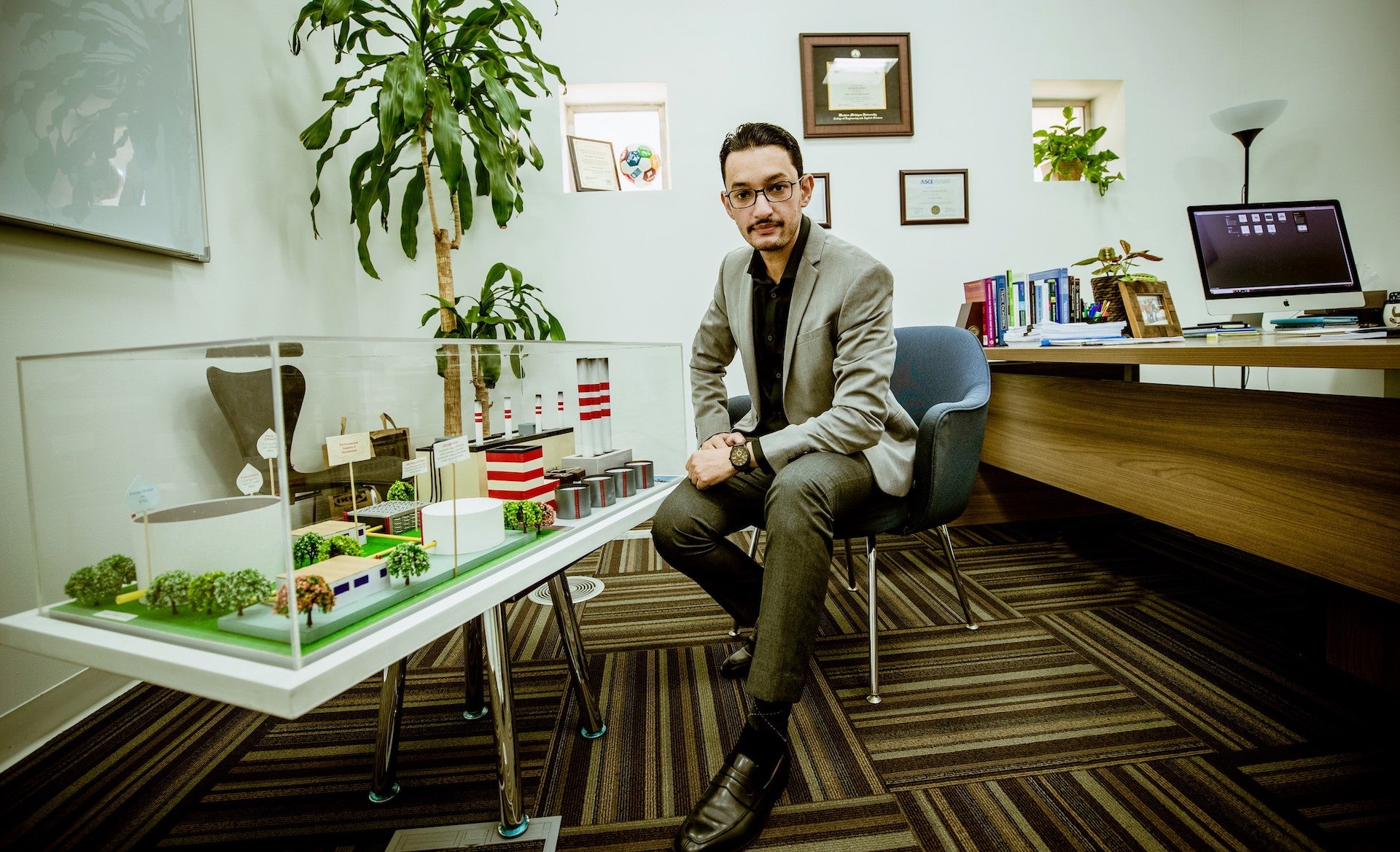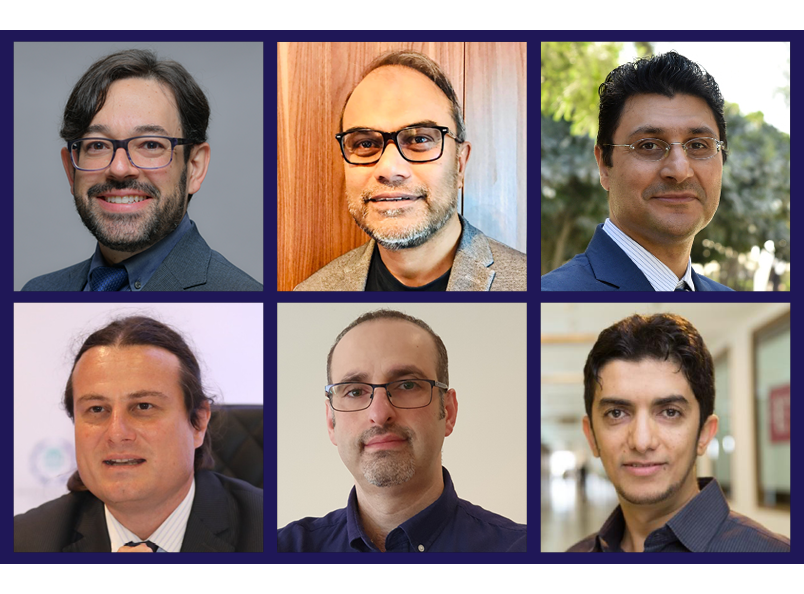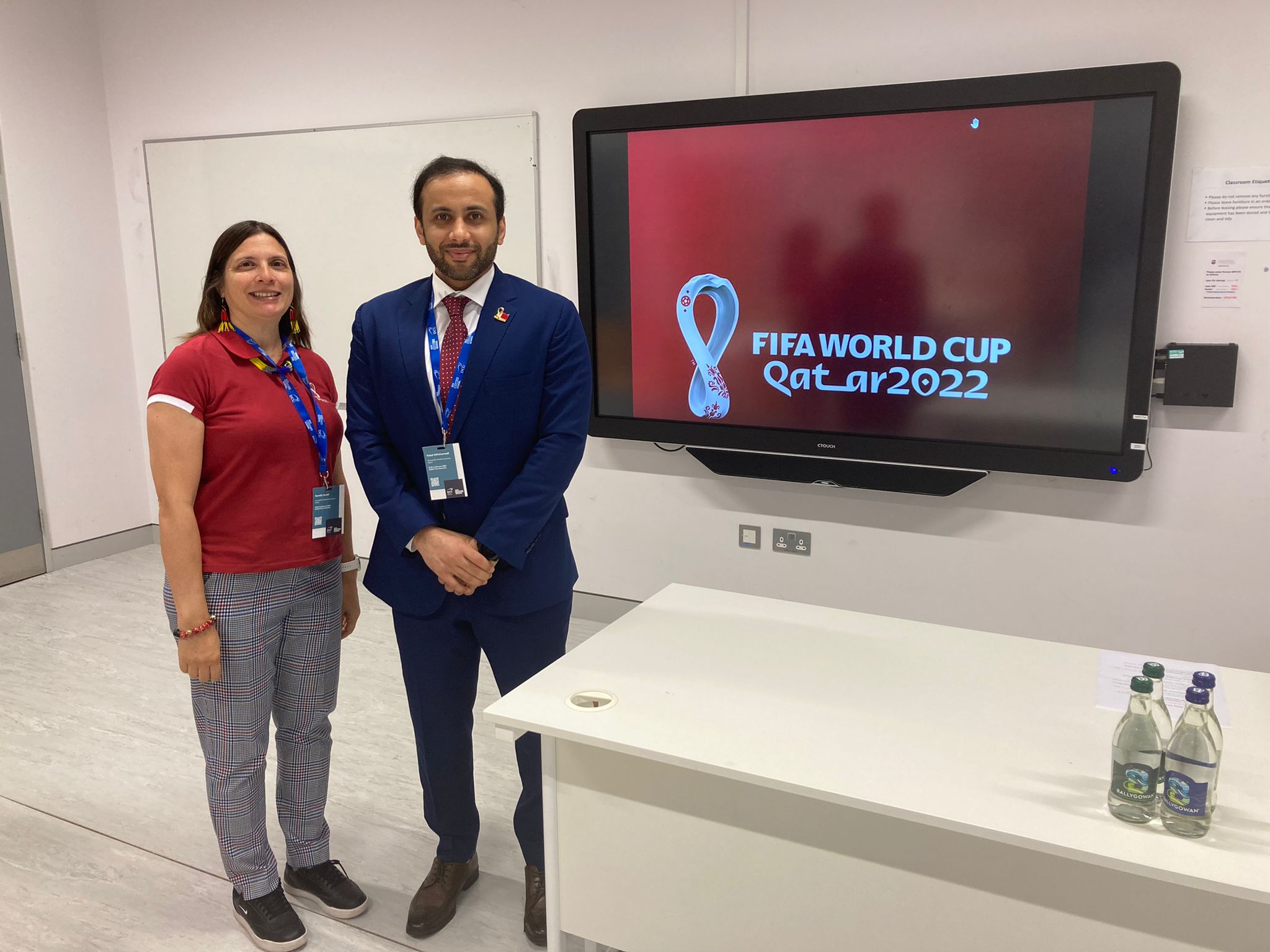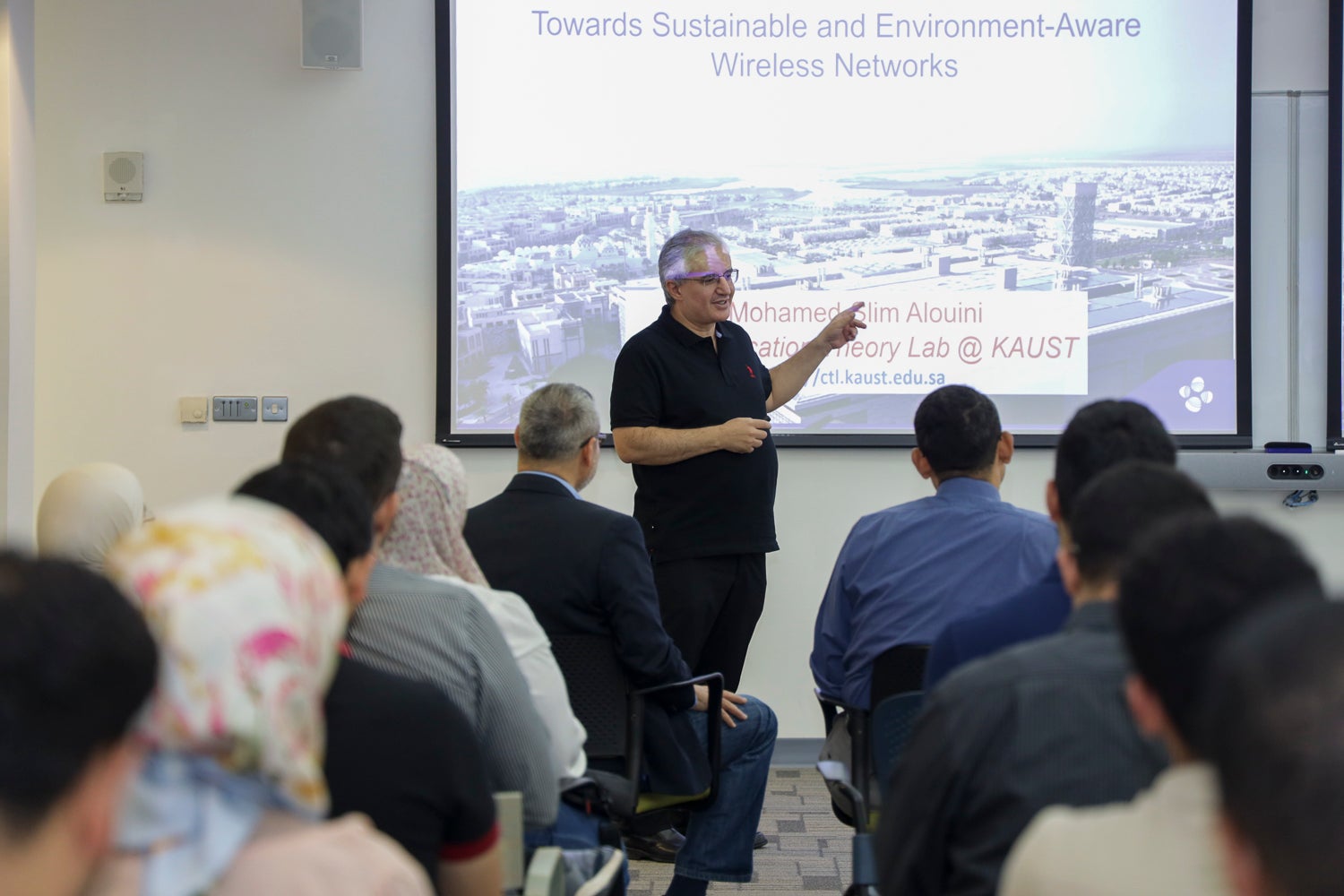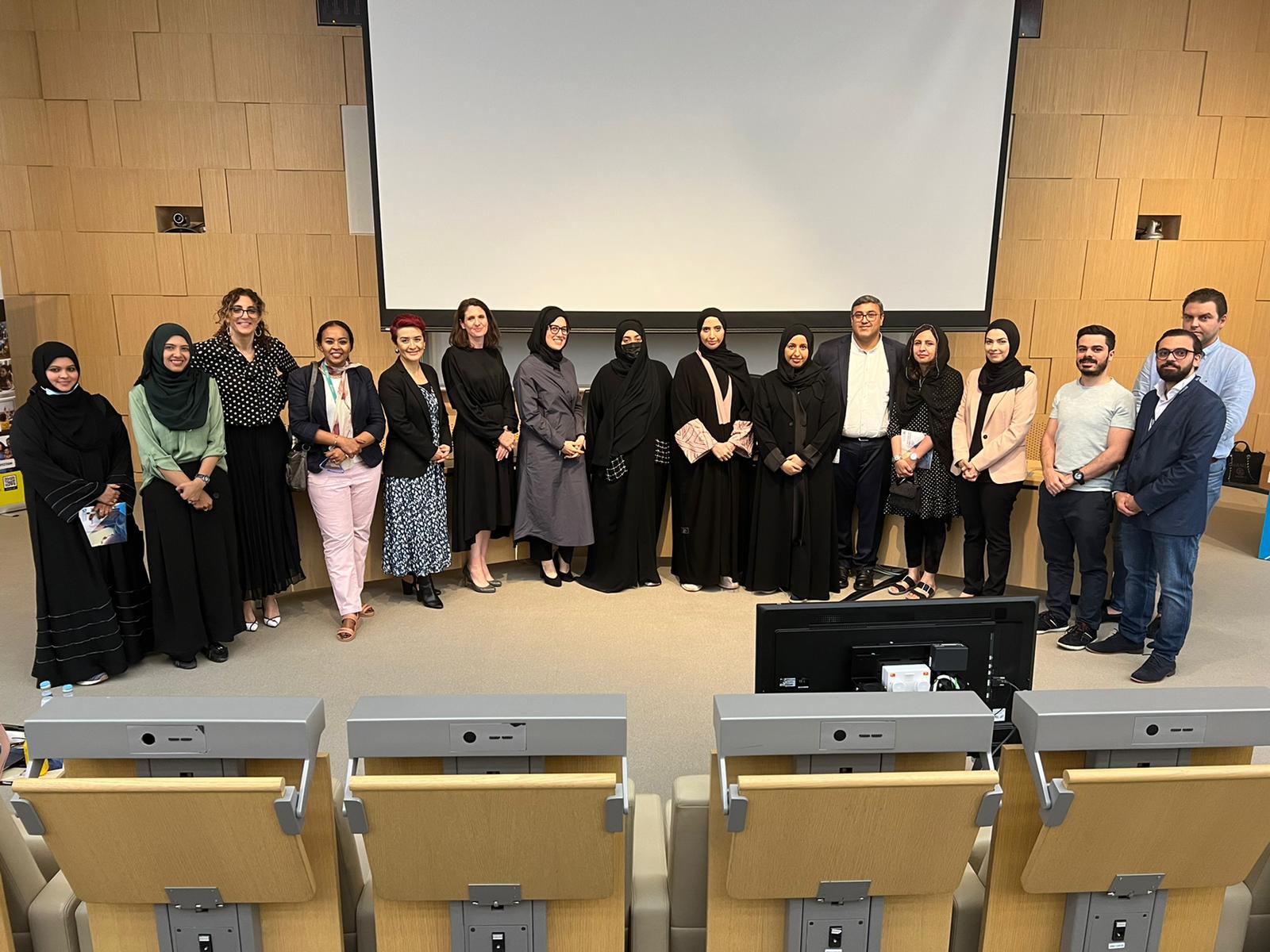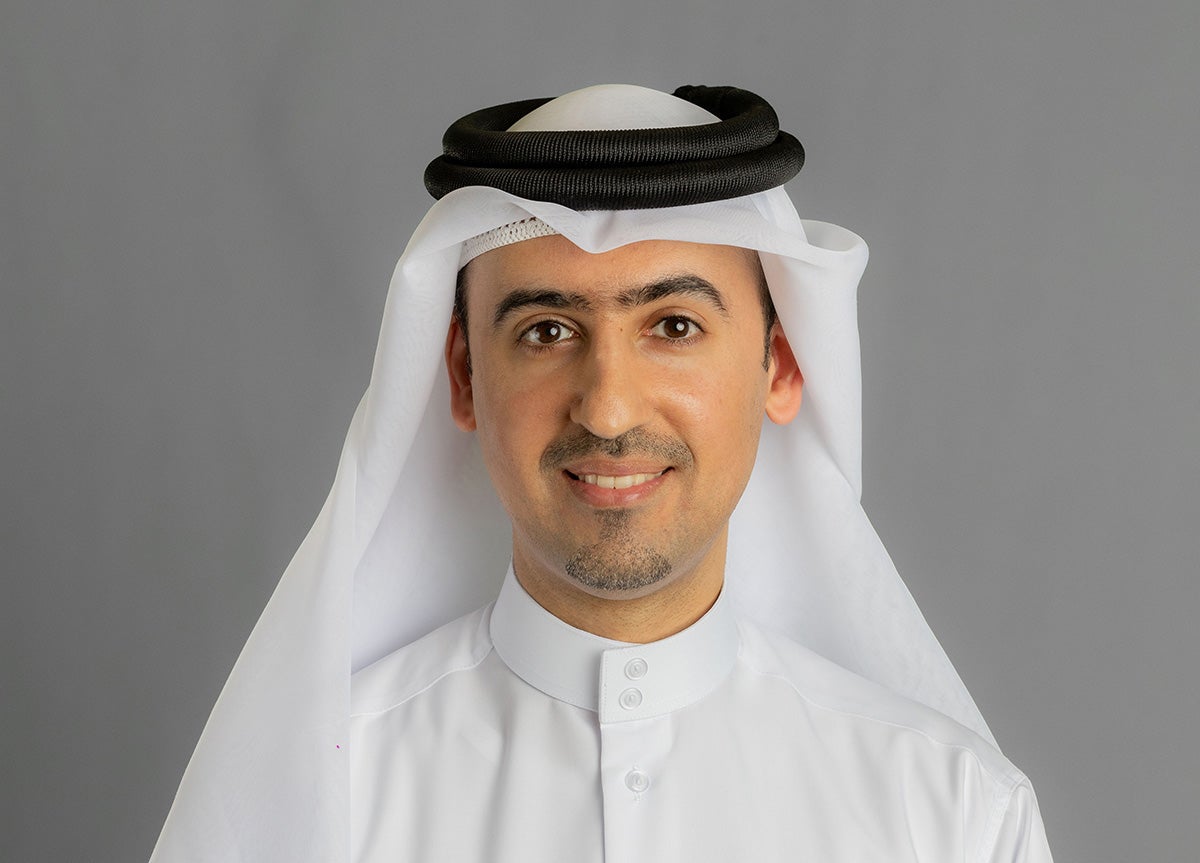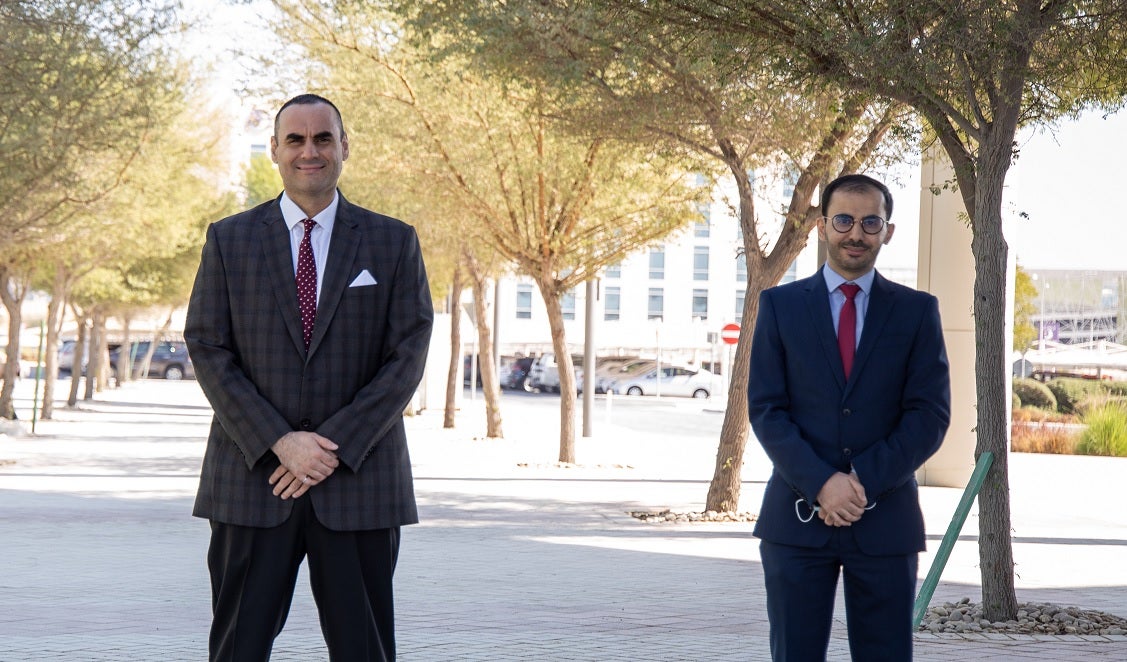
What Social Media Says About Shifting Attitudes Towards Vaccines
An interview with Dr. Hazrat Ali and Dr. Zubair Shah from the College of Science and Engineering at Hamad Bin Khalifa University
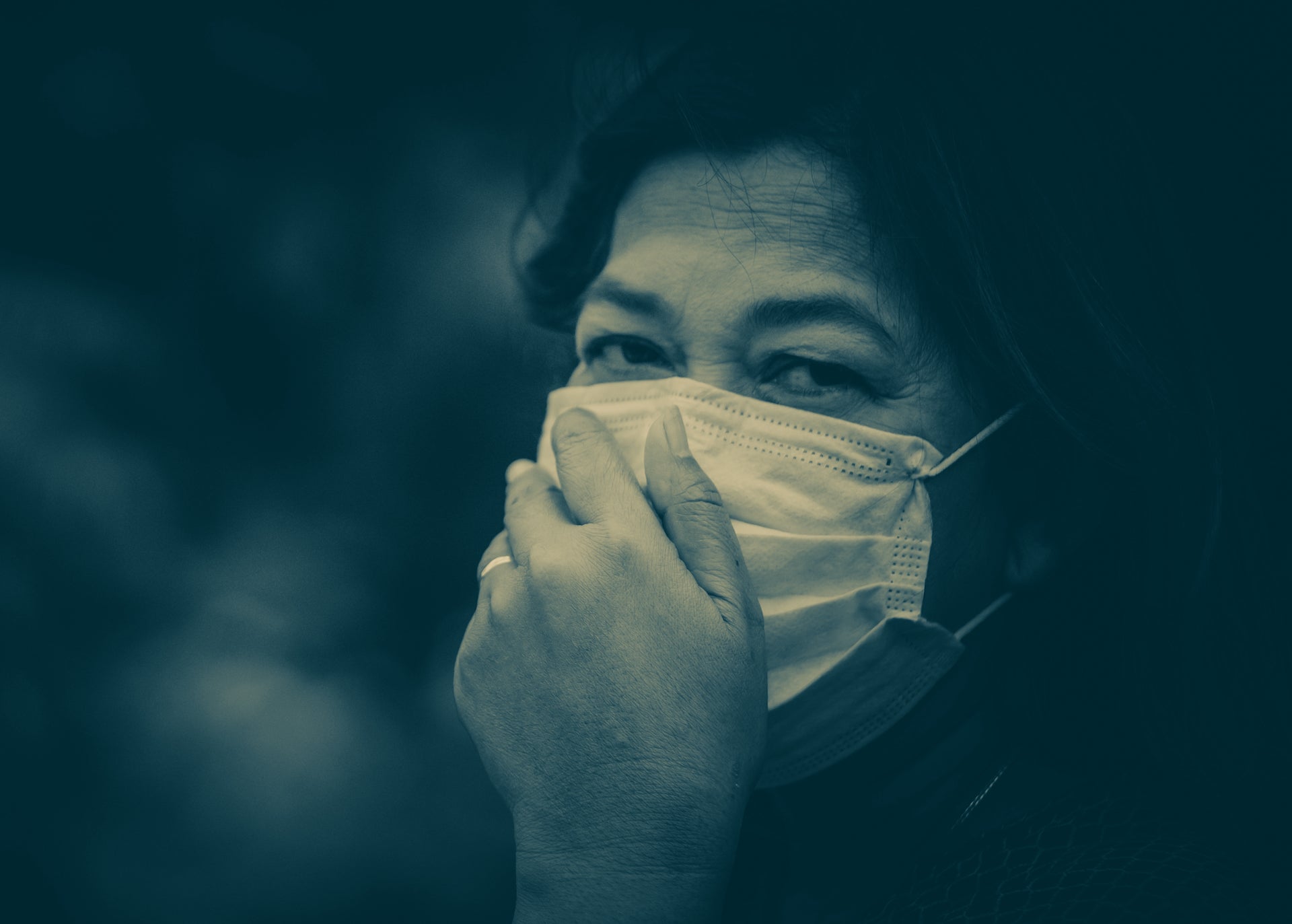
Researchers at the College of Science and Engineering (CSE) at Hamad Bin Khalifa University (HBKU) have used public data from Twitter to conduct data analytics studies on vaccine-related engagement on Twitter. A total of 88,000 tweets selected from almost 1 million tweets in five different languages were included in this study. The selected tweets included more than 57,000 unique users.
In this interview, they share their analysis of what the data suggests about public opinion towards COVID-19 vaccines.
Was much said or known about vaccines pre-COVID? If not, how much increase in the online discussion has been seen, and what does this increase in public interest and opinion about vaccines mean overall for public health?
Our data analysis demonstrates an obvious increase in online engagement among Twitter users. Interestingly, more than half of these users tweeted in the French language, which demonstrates greater engagement in the vaccine discussion among French people.
Both positive and negative changes in user sentiment were observed; however, the shift toward positive sentiments was more prominent.
Such a rise in online discussions around vaccines was previously noticed in 2017, coinciding with the measles outbreak, and in 2019 with human papillomavirus (HPV) vaccines. Still, those were only narrow peaks followed by flat discussions around vaccines.
There is an obvious continuous rise in online discussions starting in December 2020, when people started actively participating in online conversations. Compared to earlier trends, the discussion has risen significantly, which demonstrates an increase in the interest of the public towards COVID-19 vaccines.
Was much of the discussion organic, or did you see any instances where public opinion shifted or was shaped by organized campaigns?
Most of the Twitter activity was community-driven, although it does seem that organized campaigns and efforts to raise awareness contributed to increased discussions. For example, we found that almost half of the tweets were in French, indicating active participation in public debates and sharing concerns and opinions on vaccines. This could be linked to the initiative of the French government to share regular progress reports with the public on vaccine trials.
Were government and healthcare services able to effectively leverage social media during the pandemic? If yes, what strategies worked? If not, what could they have done better?
The outcome of vaccination programs relies on the public’s confidence in the vaccines. Open discussions are often driven by how the public is involved in certain issues and how they interact with each other on social media. While we did not evaluate a specific strategy by a government or healthcare organization in connection with how they used social media during the pandemic, we did observe a rise in the online discussion related to the pandemic and vaccinations. Hence, it can be suggested that public health organizations utilize this platform to raise awareness, build public trust in vaccines, and counter fake news and propaganda by promoting facts and figures on Twitter.
Of course, further research is needed to carefully devise strategies for raising awareness and addressing vaccine-related concerns expressed by the public.
Did the trends and public opinion display different attitudes towards COVID-19 vaccines? Was there a greater shift in the sentiments in favor of vaccines or against them? Were there any interesting observations?
There was an obvious shift in the sentiments, both positive and negative. To quantify these, we recorded the shift in the opinions of Twitter users during two different periods, i.e., before and during the pandemic. We observed both positive and negative shifts in sentiments.
However, our analysis suggests that the shift towards positive sentiments was more prominent. This trend can be seen in tweets for all languages that we analyzed.
What key message can be drawn from this study, and how can it help healthcare stakeholders?
Social media platforms have redefined the mode of expression and communication for the new generation. This rise in vaccine-related engagement on Twitter reveals that people are becoming more expressive in demonstrating their right to freedom of expression.
On the one hand, platforms like these provide an easy medium for the public to openly express their concerns about COVID-19 vaccines. Additionally, the social media platforms offer an opportunity (and will continue to do so) to governments, healthcare organizations, and stakeholders to quickly gauge the public’s concerns and restructure their efforts. They can do this by devising better awareness campaigns and overcoming fake news and propaganda. However, continuous research on this topic is needed, and no policy should be defined based solely on vaccine-related Twitter trends.
Dr. Hazrat Ali, Researcher, and Dr. Zubair Shah, Assistant Professor in Information and Computing Technology at the College of Science and Engineering, Hamad Bin Khalifa University.
Related News

College of Science and Engineering Signs MoU with Hassad Food to Advance Science and Technology in Food Production

HBKU’s College of Science and Engineering Team Wins First Place in Middle East and Africa at ITU AI4Dev Challenge

College of Science and Engineering Awarded Grant to Create a National Risk Management Plan for Qatar

Interview with Muneera Al-Qahtani, Graduate, College of Science and Engineering, First Batch of HBKU Graduates

CSE Wins Best Research Paper Award at 47th International Conference on Very Large Databases
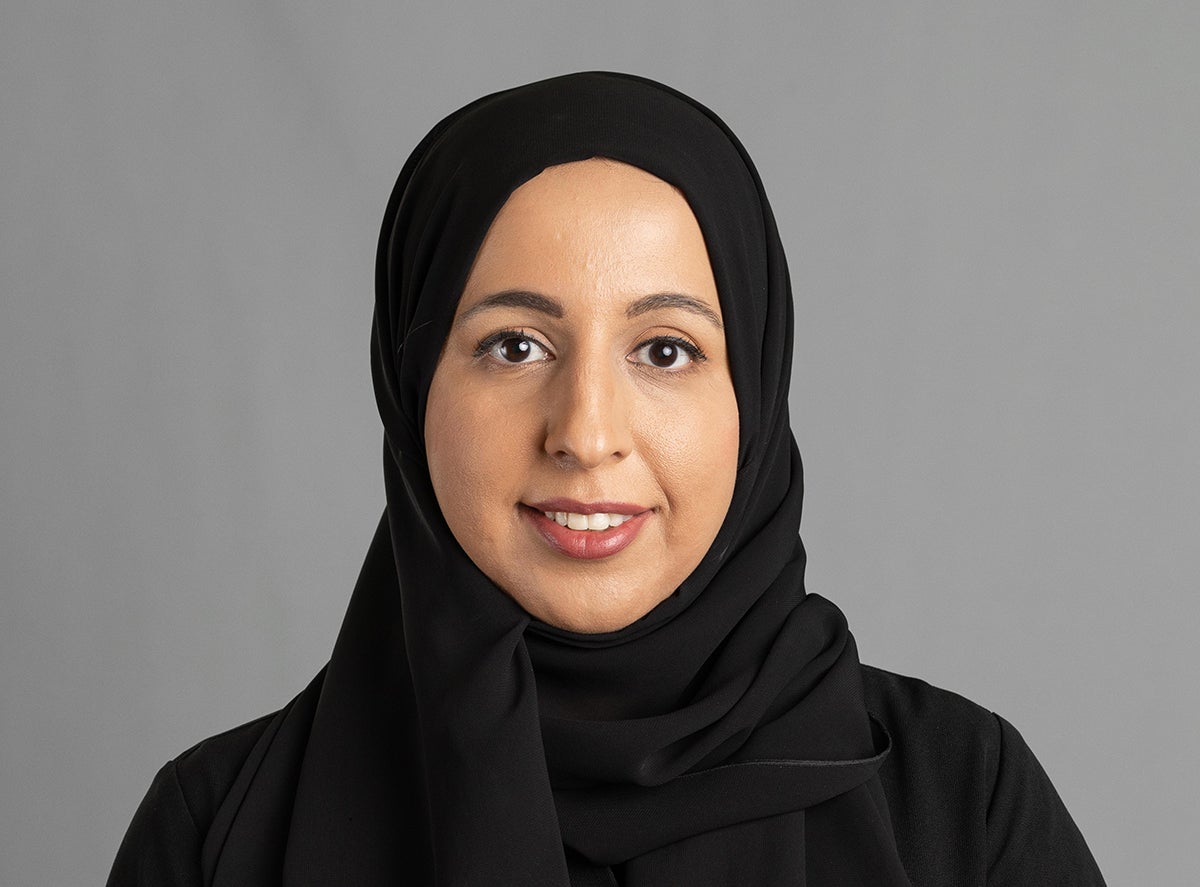
College of Science and Engineering Highlights Research on Digital Trends at International Conference on Persuasive Technologies

College of Science and Engineering Signs MoU with Hassad Food to Advance Science and Technology in Food Production

HBKU’s College of Science and Engineering Team Wins First Place in Middle East and Africa at ITU AI4Dev Challenge

College of Science and Engineering Awarded Grant to Create a National Risk Management Plan for Qatar

Interview with Muneera Al-Qahtani, Graduate, College of Science and Engineering, First Batch of HBKU Graduates

CSE Wins Best Research Paper Award at 47th International Conference on Very Large Databases

College of Science and Engineering Highlights Research on Digital Trends at International Conference on Persuasive Technologies

College of Science and Engineering Signs MoU with Hassad Food to Advance Science and Technology in Food Production

HBKU’s College of Science and Engineering Team Wins First Place in Middle East and Africa at ITU AI4Dev Challenge

College of Science and Engineering Awarded Grant to Create a National Risk Management Plan for Qatar

Interview with Muneera Al-Qahtani, Graduate, College of Science and Engineering, First Batch of HBKU Graduates

CSE Wins Best Research Paper Award at 47th International Conference on Very Large Databases

College of Science and Engineering Highlights Research on Digital Trends at International Conference on Persuasive Technologies

College of Science and Engineering Signs MoU with Hassad Food to Advance Science and Technology in Food Production

HBKU’s College of Science and Engineering Team Wins First Place in Middle East and Africa at ITU AI4Dev Challenge

College of Science and Engineering Awarded Grant to Create a National Risk Management Plan for Qatar

Interview with Muneera Al-Qahtani, Graduate, College of Science and Engineering, First Batch of HBKU Graduates

CSE Wins Best Research Paper Award at 47th International Conference on Very Large Databases

College of Science and Engineering Highlights Research on Digital Trends at International Conference on Persuasive Technologies

College of Science and Engineering Signs MoU with Hassad Food to Advance Science and Technology in Food Production

HBKU’s College of Science and Engineering Team Wins First Place in Middle East and Africa at ITU AI4Dev Challenge

College of Science and Engineering Awarded Grant to Create a National Risk Management Plan for Qatar

Interview with Muneera Al-Qahtani, Graduate, College of Science and Engineering, First Batch of HBKU Graduates

CSE Wins Best Research Paper Award at 47th International Conference on Very Large Databases

College of Science and Engineering Highlights Research on Digital Trends at International Conference on Persuasive Technologies

College of Science and Engineering Signs MoU with Hassad Food to Advance Science and Technology in Food Production

HBKU’s College of Science and Engineering Team Wins First Place in Middle East and Africa at ITU AI4Dev Challenge

College of Science and Engineering Awarded Grant to Create a National Risk Management Plan for Qatar

Interview with Muneera Al-Qahtani, Graduate, College of Science and Engineering, First Batch of HBKU Graduates

CSE Wins Best Research Paper Award at 47th International Conference on Very Large Databases

College of Science and Engineering Highlights Research on Digital Trends at International Conference on Persuasive Technologies

College of Science and Engineering Signs MoU with Hassad Food to Advance Science and Technology in Food Production

HBKU’s College of Science and Engineering Team Wins First Place in Middle East and Africa at ITU AI4Dev Challenge

College of Science and Engineering Awarded Grant to Create a National Risk Management Plan for Qatar

Interview with Muneera Al-Qahtani, Graduate, College of Science and Engineering, First Batch of HBKU Graduates

CSE Wins Best Research Paper Award at 47th International Conference on Very Large Databases

College of Science and Engineering Highlights Research on Digital Trends at International Conference on Persuasive Technologies

College of Science and Engineering Signs MoU with Hassad Food to Advance Science and Technology in Food Production

HBKU’s College of Science and Engineering Team Wins First Place in Middle East and Africa at ITU AI4Dev Challenge

College of Science and Engineering Awarded Grant to Create a National Risk Management Plan for Qatar

Interview with Muneera Al-Qahtani, Graduate, College of Science and Engineering, First Batch of HBKU Graduates

CSE Wins Best Research Paper Award at 47th International Conference on Very Large Databases

College of Science and Engineering Highlights Research on Digital Trends at International Conference on Persuasive Technologies

College of Science and Engineering Signs MoU with Hassad Food to Advance Science and Technology in Food Production

HBKU’s College of Science and Engineering Team Wins First Place in Middle East and Africa at ITU AI4Dev Challenge

College of Science and Engineering Awarded Grant to Create a National Risk Management Plan for Qatar

Interview with Muneera Al-Qahtani, Graduate, College of Science and Engineering, First Batch of HBKU Graduates

CSE Wins Best Research Paper Award at 47th International Conference on Very Large Databases

College of Science and Engineering Highlights Research on Digital Trends at International Conference on Persuasive Technologies

College of Science and Engineering Signs MoU with Hassad Food to Advance Science and Technology in Food Production

HBKU’s College of Science and Engineering Team Wins First Place in Middle East and Africa at ITU AI4Dev Challenge

College of Science and Engineering Awarded Grant to Create a National Risk Management Plan for Qatar

Interview with Muneera Al-Qahtani, Graduate, College of Science and Engineering, First Batch of HBKU Graduates

CSE Wins Best Research Paper Award at 47th International Conference on Very Large Databases

College of Science and Engineering Highlights Research on Digital Trends at International Conference on Persuasive Technologies

College of Science and Engineering Signs MoU with Hassad Food to Advance Science and Technology in Food Production

HBKU’s College of Science and Engineering Team Wins First Place in Middle East and Africa at ITU AI4Dev Challenge

College of Science and Engineering Awarded Grant to Create a National Risk Management Plan for Qatar

Interview with Muneera Al-Qahtani, Graduate, College of Science and Engineering, First Batch of HBKU Graduates

CSE Wins Best Research Paper Award at 47th International Conference on Very Large Databases

College of Science and Engineering Highlights Research on Digital Trends at International Conference on Persuasive Technologies

College of Science and Engineering Signs MoU with Hassad Food to Advance Science and Technology in Food Production

HBKU’s College of Science and Engineering Team Wins First Place in Middle East and Africa at ITU AI4Dev Challenge

College of Science and Engineering Awarded Grant to Create a National Risk Management Plan for Qatar

Interview with Muneera Al-Qahtani, Graduate, College of Science and Engineering, First Batch of HBKU Graduates

CSE Wins Best Research Paper Award at 47th International Conference on Very Large Databases

College of Science and Engineering Highlights Research on Digital Trends at International Conference on Persuasive Technologies

College of Science and Engineering Signs MoU with Hassad Food to Advance Science and Technology in Food Production

HBKU’s College of Science and Engineering Team Wins First Place in Middle East and Africa at ITU AI4Dev Challenge

College of Science and Engineering Awarded Grant to Create a National Risk Management Plan for Qatar

Interview with Muneera Al-Qahtani, Graduate, College of Science and Engineering, First Batch of HBKU Graduates

CSE Wins Best Research Paper Award at 47th International Conference on Very Large Databases

College of Science and Engineering Highlights Research on Digital Trends at International Conference on Persuasive Technologies

College of Science and Engineering Signs MoU with Hassad Food to Advance Science and Technology in Food Production

HBKU’s College of Science and Engineering Team Wins First Place in Middle East and Africa at ITU AI4Dev Challenge

College of Science and Engineering Awarded Grant to Create a National Risk Management Plan for Qatar

Interview with Muneera Al-Qahtani, Graduate, College of Science and Engineering, First Batch of HBKU Graduates

CSE Wins Best Research Paper Award at 47th International Conference on Very Large Databases

College of Science and Engineering Highlights Research on Digital Trends at International Conference on Persuasive Technologies

College of Science and Engineering Signs MoU with Hassad Food to Advance Science and Technology in Food Production

HBKU’s College of Science and Engineering Team Wins First Place in Middle East and Africa at ITU AI4Dev Challenge

College of Science and Engineering Awarded Grant to Create a National Risk Management Plan for Qatar

Interview with Muneera Al-Qahtani, Graduate, College of Science and Engineering, First Batch of HBKU Graduates

CSE Wins Best Research Paper Award at 47th International Conference on Very Large Databases

College of Science and Engineering Highlights Research on Digital Trends at International Conference on Persuasive Technologies

College of Science and Engineering Signs MoU with Hassad Food to Advance Science and Technology in Food Production

HBKU’s College of Science and Engineering Team Wins First Place in Middle East and Africa at ITU AI4Dev Challenge

College of Science and Engineering Awarded Grant to Create a National Risk Management Plan for Qatar

Interview with Muneera Al-Qahtani, Graduate, College of Science and Engineering, First Batch of HBKU Graduates

CSE Wins Best Research Paper Award at 47th International Conference on Very Large Databases

College of Science and Engineering Highlights Research on Digital Trends at International Conference on Persuasive Technologies

College of Science and Engineering Signs MoU with Hassad Food to Advance Science and Technology in Food Production

HBKU’s College of Science and Engineering Team Wins First Place in Middle East and Africa at ITU AI4Dev Challenge

College of Science and Engineering Awarded Grant to Create a National Risk Management Plan for Qatar

Interview with Muneera Al-Qahtani, Graduate, College of Science and Engineering, First Batch of HBKU Graduates

CSE Wins Best Research Paper Award at 47th International Conference on Very Large Databases

College of Science and Engineering Highlights Research on Digital Trends at International Conference on Persuasive Technologies

College of Science and Engineering Signs MoU with Hassad Food to Advance Science and Technology in Food Production

HBKU’s College of Science and Engineering Team Wins First Place in Middle East and Africa at ITU AI4Dev Challenge

College of Science and Engineering Awarded Grant to Create a National Risk Management Plan for Qatar

Interview with Muneera Al-Qahtani, Graduate, College of Science and Engineering, First Batch of HBKU Graduates

CSE Wins Best Research Paper Award at 47th International Conference on Very Large Databases

College of Science and Engineering Highlights Research on Digital Trends at International Conference on Persuasive Technologies

College of Science and Engineering Signs MoU with Hassad Food to Advance Science and Technology in Food Production

HBKU’s College of Science and Engineering Team Wins First Place in Middle East and Africa at ITU AI4Dev Challenge

College of Science and Engineering Awarded Grant to Create a National Risk Management Plan for Qatar

Interview with Muneera Al-Qahtani, Graduate, College of Science and Engineering, First Batch of HBKU Graduates

CSE Wins Best Research Paper Award at 47th International Conference on Very Large Databases

College of Science and Engineering Highlights Research on Digital Trends at International Conference on Persuasive Technologies

College of Science and Engineering Signs MoU with Hassad Food to Advance Science and Technology in Food Production

HBKU’s College of Science and Engineering Team Wins First Place in Middle East and Africa at ITU AI4Dev Challenge

College of Science and Engineering Awarded Grant to Create a National Risk Management Plan for Qatar

Interview with Muneera Al-Qahtani, Graduate, College of Science and Engineering, First Batch of HBKU Graduates

CSE Wins Best Research Paper Award at 47th International Conference on Very Large Databases

College of Science and Engineering Highlights Research on Digital Trends at International Conference on Persuasive Technologies

College of Science and Engineering Signs MoU with Hassad Food to Advance Science and Technology in Food Production

HBKU’s College of Science and Engineering Team Wins First Place in Middle East and Africa at ITU AI4Dev Challenge

College of Science and Engineering Awarded Grant to Create a National Risk Management Plan for Qatar

Interview with Muneera Al-Qahtani, Graduate, College of Science and Engineering, First Batch of HBKU Graduates

CSE Wins Best Research Paper Award at 47th International Conference on Very Large Databases

College of Science and Engineering Highlights Research on Digital Trends at International Conference on Persuasive Technologies

College of Science and Engineering Signs MoU with Hassad Food to Advance Science and Technology in Food Production

HBKU’s College of Science and Engineering Team Wins First Place in Middle East and Africa at ITU AI4Dev Challenge

College of Science and Engineering Awarded Grant to Create a National Risk Management Plan for Qatar

Interview with Muneera Al-Qahtani, Graduate, College of Science and Engineering, First Batch of HBKU Graduates

CSE Wins Best Research Paper Award at 47th International Conference on Very Large Databases

College of Science and Engineering Highlights Research on Digital Trends at International Conference on Persuasive Technologies

College of Science and Engineering Signs MoU with Hassad Food to Advance Science and Technology in Food Production

HBKU’s College of Science and Engineering Team Wins First Place in Middle East and Africa at ITU AI4Dev Challenge

College of Science and Engineering Awarded Grant to Create a National Risk Management Plan for Qatar

Interview with Muneera Al-Qahtani, Graduate, College of Science and Engineering, First Batch of HBKU Graduates

CSE Wins Best Research Paper Award at 47th International Conference on Very Large Databases

College of Science and Engineering Highlights Research on Digital Trends at International Conference on Persuasive Technologies

College of Science and Engineering Signs MoU with Hassad Food to Advance Science and Technology in Food Production

HBKU’s College of Science and Engineering Team Wins First Place in Middle East and Africa at ITU AI4Dev Challenge

College of Science and Engineering Awarded Grant to Create a National Risk Management Plan for Qatar

Interview with Muneera Al-Qahtani, Graduate, College of Science and Engineering, First Batch of HBKU Graduates

CSE Wins Best Research Paper Award at 47th International Conference on Very Large Databases

College of Science and Engineering Highlights Research on Digital Trends at International Conference on Persuasive Technologies

College of Science and Engineering Signs MoU with Hassad Food to Advance Science and Technology in Food Production

HBKU’s College of Science and Engineering Team Wins First Place in Middle East and Africa at ITU AI4Dev Challenge

College of Science and Engineering Awarded Grant to Create a National Risk Management Plan for Qatar

Interview with Muneera Al-Qahtani, Graduate, College of Science and Engineering, First Batch of HBKU Graduates

CSE Wins Best Research Paper Award at 47th International Conference on Very Large Databases

College of Science and Engineering Highlights Research on Digital Trends at International Conference on Persuasive Technologies

College of Science and Engineering Signs MoU with Hassad Food to Advance Science and Technology in Food Production

HBKU’s College of Science and Engineering Team Wins First Place in Middle East and Africa at ITU AI4Dev Challenge

College of Science and Engineering Awarded Grant to Create a National Risk Management Plan for Qatar

Interview with Muneera Al-Qahtani, Graduate, College of Science and Engineering, First Batch of HBKU Graduates

CSE Wins Best Research Paper Award at 47th International Conference on Very Large Databases

College of Science and Engineering Highlights Research on Digital Trends at International Conference on Persuasive Technologies

College of Science and Engineering Signs MoU with Hassad Food to Advance Science and Technology in Food Production

HBKU’s College of Science and Engineering Team Wins First Place in Middle East and Africa at ITU AI4Dev Challenge

College of Science and Engineering Awarded Grant to Create a National Risk Management Plan for Qatar

Interview with Muneera Al-Qahtani, Graduate, College of Science and Engineering, First Batch of HBKU Graduates

CSE Wins Best Research Paper Award at 47th International Conference on Very Large Databases

College of Science and Engineering Highlights Research on Digital Trends at International Conference on Persuasive Technologies

College of Science and Engineering Signs MoU with Hassad Food to Advance Science and Technology in Food Production

HBKU’s College of Science and Engineering Team Wins First Place in Middle East and Africa at ITU AI4Dev Challenge

College of Science and Engineering Awarded Grant to Create a National Risk Management Plan for Qatar

Interview with Muneera Al-Qahtani, Graduate, College of Science and Engineering, First Batch of HBKU Graduates

CSE Wins Best Research Paper Award at 47th International Conference on Very Large Databases

College of Science and Engineering Highlights Research on Digital Trends at International Conference on Persuasive Technologies

College of Science and Engineering Signs MoU with Hassad Food to Advance Science and Technology in Food Production

HBKU’s College of Science and Engineering Team Wins First Place in Middle East and Africa at ITU AI4Dev Challenge

College of Science and Engineering Awarded Grant to Create a National Risk Management Plan for Qatar

Interview with Muneera Al-Qahtani, Graduate, College of Science and Engineering, First Batch of HBKU Graduates

CSE Wins Best Research Paper Award at 47th International Conference on Very Large Databases

College of Science and Engineering Highlights Research on Digital Trends at International Conference on Persuasive Technologies

College of Science and Engineering Signs MoU with Hassad Food to Advance Science and Technology in Food Production

HBKU’s College of Science and Engineering Team Wins First Place in Middle East and Africa at ITU AI4Dev Challenge

College of Science and Engineering Awarded Grant to Create a National Risk Management Plan for Qatar

Interview with Muneera Al-Qahtani, Graduate, College of Science and Engineering, First Batch of HBKU Graduates

CSE Wins Best Research Paper Award at 47th International Conference on Very Large Databases

College of Science and Engineering Highlights Research on Digital Trends at International Conference on Persuasive Technologies

College of Science and Engineering Signs MoU with Hassad Food to Advance Science and Technology in Food Production

HBKU’s College of Science and Engineering Team Wins First Place in Middle East and Africa at ITU AI4Dev Challenge

College of Science and Engineering Awarded Grant to Create a National Risk Management Plan for Qatar

Interview with Muneera Al-Qahtani, Graduate, College of Science and Engineering, First Batch of HBKU Graduates

CSE Wins Best Research Paper Award at 47th International Conference on Very Large Databases

College of Science and Engineering Highlights Research on Digital Trends at International Conference on Persuasive Technologies

College of Science and Engineering Signs MoU with Hassad Food to Advance Science and Technology in Food Production

HBKU’s College of Science and Engineering Team Wins First Place in Middle East and Africa at ITU AI4Dev Challenge

College of Science and Engineering Awarded Grant to Create a National Risk Management Plan for Qatar

Interview with Muneera Al-Qahtani, Graduate, College of Science and Engineering, First Batch of HBKU Graduates

CSE Wins Best Research Paper Award at 47th International Conference on Very Large Databases

College of Science and Engineering Highlights Research on Digital Trends at International Conference on Persuasive Technologies

College of Science and Engineering Signs MoU with Hassad Food to Advance Science and Technology in Food Production

HBKU’s College of Science and Engineering Team Wins First Place in Middle East and Africa at ITU AI4Dev Challenge

College of Science and Engineering Awarded Grant to Create a National Risk Management Plan for Qatar

Interview with Muneera Al-Qahtani, Graduate, College of Science and Engineering, First Batch of HBKU Graduates

CSE Wins Best Research Paper Award at 47th International Conference on Very Large Databases

College of Science and Engineering Highlights Research on Digital Trends at International Conference on Persuasive Technologies

College of Science and Engineering Signs MoU with Hassad Food to Advance Science and Technology in Food Production

HBKU’s College of Science and Engineering Team Wins First Place in Middle East and Africa at ITU AI4Dev Challenge

College of Science and Engineering Awarded Grant to Create a National Risk Management Plan for Qatar

Interview with Muneera Al-Qahtani, Graduate, College of Science and Engineering, First Batch of HBKU Graduates

CSE Wins Best Research Paper Award at 47th International Conference on Very Large Databases

College of Science and Engineering Highlights Research on Digital Trends at International Conference on Persuasive Technologies

College of Science and Engineering Signs MoU with Hassad Food to Advance Science and Technology in Food Production

HBKU’s College of Science and Engineering Team Wins First Place in Middle East and Africa at ITU AI4Dev Challenge

College of Science and Engineering Awarded Grant to Create a National Risk Management Plan for Qatar

Interview with Muneera Al-Qahtani, Graduate, College of Science and Engineering, First Batch of HBKU Graduates

CSE Wins Best Research Paper Award at 47th International Conference on Very Large Databases

College of Science and Engineering Highlights Research on Digital Trends at International Conference on Persuasive Technologies

College of Science and Engineering Signs MoU with Hassad Food to Advance Science and Technology in Food Production

HBKU’s College of Science and Engineering Team Wins First Place in Middle East and Africa at ITU AI4Dev Challenge

College of Science and Engineering Awarded Grant to Create a National Risk Management Plan for Qatar

Interview with Muneera Al-Qahtani, Graduate, College of Science and Engineering, First Batch of HBKU Graduates

CSE Wins Best Research Paper Award at 47th International Conference on Very Large Databases

College of Science and Engineering Highlights Research on Digital Trends at International Conference on Persuasive Technologies

College of Science and Engineering Signs MoU with Hassad Food to Advance Science and Technology in Food Production

HBKU’s College of Science and Engineering Team Wins First Place in Middle East and Africa at ITU AI4Dev Challenge

College of Science and Engineering Awarded Grant to Create a National Risk Management Plan for Qatar

Interview with Muneera Al-Qahtani, Graduate, College of Science and Engineering, First Batch of HBKU Graduates

CSE Wins Best Research Paper Award at 47th International Conference on Very Large Databases

College of Science and Engineering Highlights Research on Digital Trends at International Conference on Persuasive Technologies

College of Science and Engineering Signs MoU with Hassad Food to Advance Science and Technology in Food Production

HBKU’s College of Science and Engineering Team Wins First Place in Middle East and Africa at ITU AI4Dev Challenge

College of Science and Engineering Awarded Grant to Create a National Risk Management Plan for Qatar

Interview with Muneera Al-Qahtani, Graduate, College of Science and Engineering, First Batch of HBKU Graduates

CSE Wins Best Research Paper Award at 47th International Conference on Very Large Databases

College of Science and Engineering Highlights Research on Digital Trends at International Conference on Persuasive Technologies

College of Science and Engineering Signs MoU with Hassad Food to Advance Science and Technology in Food Production

HBKU’s College of Science and Engineering Team Wins First Place in Middle East and Africa at ITU AI4Dev Challenge

College of Science and Engineering Awarded Grant to Create a National Risk Management Plan for Qatar

Interview with Muneera Al-Qahtani, Graduate, College of Science and Engineering, First Batch of HBKU Graduates

CSE Wins Best Research Paper Award at 47th International Conference on Very Large Databases

College of Science and Engineering Highlights Research on Digital Trends at International Conference on Persuasive Technologies

College of Science and Engineering Signs MoU with Hassad Food to Advance Science and Technology in Food Production

HBKU’s College of Science and Engineering Team Wins First Place in Middle East and Africa at ITU AI4Dev Challenge

College of Science and Engineering Awarded Grant to Create a National Risk Management Plan for Qatar

Interview with Muneera Al-Qahtani, Graduate, College of Science and Engineering, First Batch of HBKU Graduates

CSE Wins Best Research Paper Award at 47th International Conference on Very Large Databases

College of Science and Engineering Highlights Research on Digital Trends at International Conference on Persuasive Technologies

College of Science and Engineering Signs MoU with Hassad Food to Advance Science and Technology in Food Production









